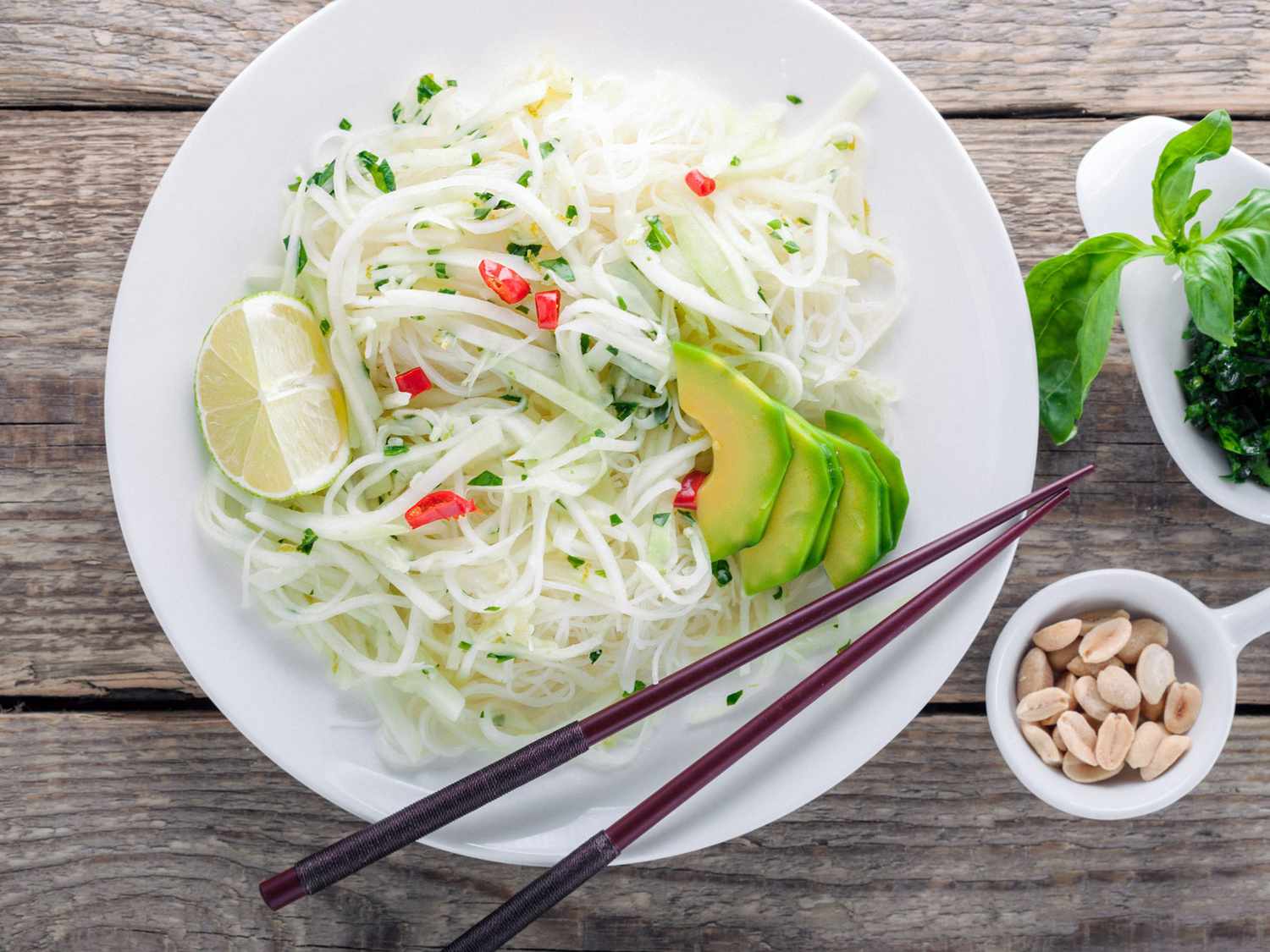If you haven't tried kohlrabi, you're going to want to add it to your shopping list before your next market haul. Kohlrabi (also known as German turnips) are harvested in winter and spring, and they're usually purple, white, or pale green bulbs. While kohlrabi resembles turnips, it's actually part of the cabbage, broccoli, and cauliflower family. Kohlrabi is an incredibly versatile vegetable—one that's easy to cook, can be added to many dishes, and is packed full of flavor and nutrients.

Similar to Swiss chard and beets, kohlrabi typically comes with long green stems that are delicious when simply sautéed with some olive oil, salt, garlic, and lemon. It can also be added to pasta and soups for extra nourishment. The bulb of kohlrabi can also be used in many ways, and can be baked, roasted, sautéed or even eaten raw—perfect to add a crunch to any salad. One of the most popular ways to enjoy kohlrabi now is in noodle form. In fact, kohlrabi noodles may soon become your favorite veggie noodle alternative!
What Are Kohlrabi Noodles?
Many stores have pre-packaged kohlrabi noodles, but if you can't find them at your local market or Trader Joe's, they're easy to make at home. If your kohlrabi has stems attached, simply cut them, and cook them up, or place them in a plastic bag and store them in the refrigerator for future use. Then peel the kohlrabi and use a spiralizer to achieve the perfect noodle alternative. Unlike some other vegetable noodles, kohlrabi is hearty, so it doesn't get mushy when cooked, and the flavor is subtle and just mildly sweet.
Kohlrabi Noodle Nutritional Benefits
Kohlrabi is an excellent source of vitamins, minerals, and antioxidants, which are essential for a healthy immune system. Eating kohlrabi regularly could also help you maintain a healthy gut, since the veggie is packed with fiber and aids in digestion. What's more? The skin of purple kohlrabi is loaded with anthocyanins, which is a type of flavonoid that gives plant-based foods a red, purple, or blue hue. According to a 2016 study, a high intake of anthocyanins may be associated with a lower risk of heart disease, particularly in men. Additional research suggests anthocyanins may also improve brain function.
These are just a few of the many reasons you may want to swap out regular pasta with kohlrabi noodles.
How to Cook With Kohlrabi Noodles
There are countless ways to cook with kohlrabi noodles. Make a big bowl of "ramen" with lemongrass broth, baby bok choy, and scallions, or whip up a quick sauce to toss on some kohlrabi noodles using blistered cherry tomatoes, basil, eggplant, and garlic.
A good rule of thumb is to cook kohlrabi noodles the same way you would prepare zucchini noodles—they only need to be cooked for two to four minutes. And you definitely don't want to leave them over heat for too long, otherwise they'll be way too soft.
How Long Do Kohlrabi Noodles Stay Good For?
Just like many vegetables, kohlrabi will stay fresh in your fridge for about a week. If you don't plan on eating it right away, simply cut the stems off and store them in a tightly sealed plastic bag. The bulb should also be stored in a plastic bag, or tightly sealed in plastic wrap. Similarly, kohlrabi noodles and pieces will also last in the fridge for about seven days.
Kholrabi Noodle Recipes
Whether you're craving something Italian, Asian-inspired, or cold and refreshing, kohlrabi will be the star of the meal. Try using it as a replacement in this comforting Peanut Noodles With Edamame recipe. This dish is beyond flavorful and can be whipped up in just 20 minutes. If you're a curry fanatic, try this vibrant Green Coconut Curry recipe that's packed with tofu and other crunchy peppers and sugar snap peas. You can also make a lighter Mediterranean meal with a lemony sauce, feta, kalamata olives, and sundried tomatoes. And if you're looking to do even more with kohlrabi, use it to make a healthier version of Veggie Fried Rice. Use a food processor or box grater to create the perfect kohlrabi rice in just a few minutes.
The post What Is Kohlrabi? Here's What You Need to Know About the Vegetable That Can Be Made Into Noodles appeared first on Real Simple.
